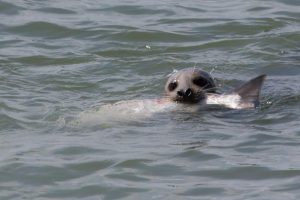
Our story last week about the impacts of predators on Chinook salmon populations in Puget Sound continues to gather strong interest from our readers. Several thousand viewed it after it came out last Thursday, and it was reprinted in the Kitsap Sun on Monday.
The story was written by PSI senior writer Christopher Dunagan and reports on a new study showing that area seals and sea lions are eating a much higher amount of threatened Chinook than previously known. Many questions still remain, but it is the first time that a peer-reviewed study has attempted to quantify these predator impacts to such a degree and in such detail.
Here are a few highlights: As many as one in five young Chinook are eaten before they can make it out of Puget Sound into the open ocean. Area seals and sea lions eat twice the amount of Chinook as do Puget Sound’s endangered orcas, and six times the annual commercial and recreational catches from local fishermen combined. Scientists attribute the large numbers to an increase in seals and sea lions since the 1970s after the animals were protected under the Marine Mammal Protection Act.
Not surprisingly, scientists and policymakers will have to look more closely at these numbers to determine what to do. Seals and sea lions are rightly protected, and old (and undesirable) policies of hunting the animals to protect salmon are not an option. Scientists say that even if such policies were possible, there is no saying that they would actually protect the salmon population.
The fact is that the seals and sea lions are just doing what they do naturally, and while their populations are healthy, there aren’t necessarily more of them than there should be. Some would argue that this study is a reminder that we need to continue to recover habitat and create better conditions for the salmon to withstand what are essentially normal pressures from the environment. Historically, Puget Sound’s Chinook and predators co-existed just fine, but that was before millions of humans started destroying the local streams and floodplains, degrading beaches and polluting the water. See a harbor seal with a salmon in its mouth? That can also be seen as a sign of Puget Sound’s health.